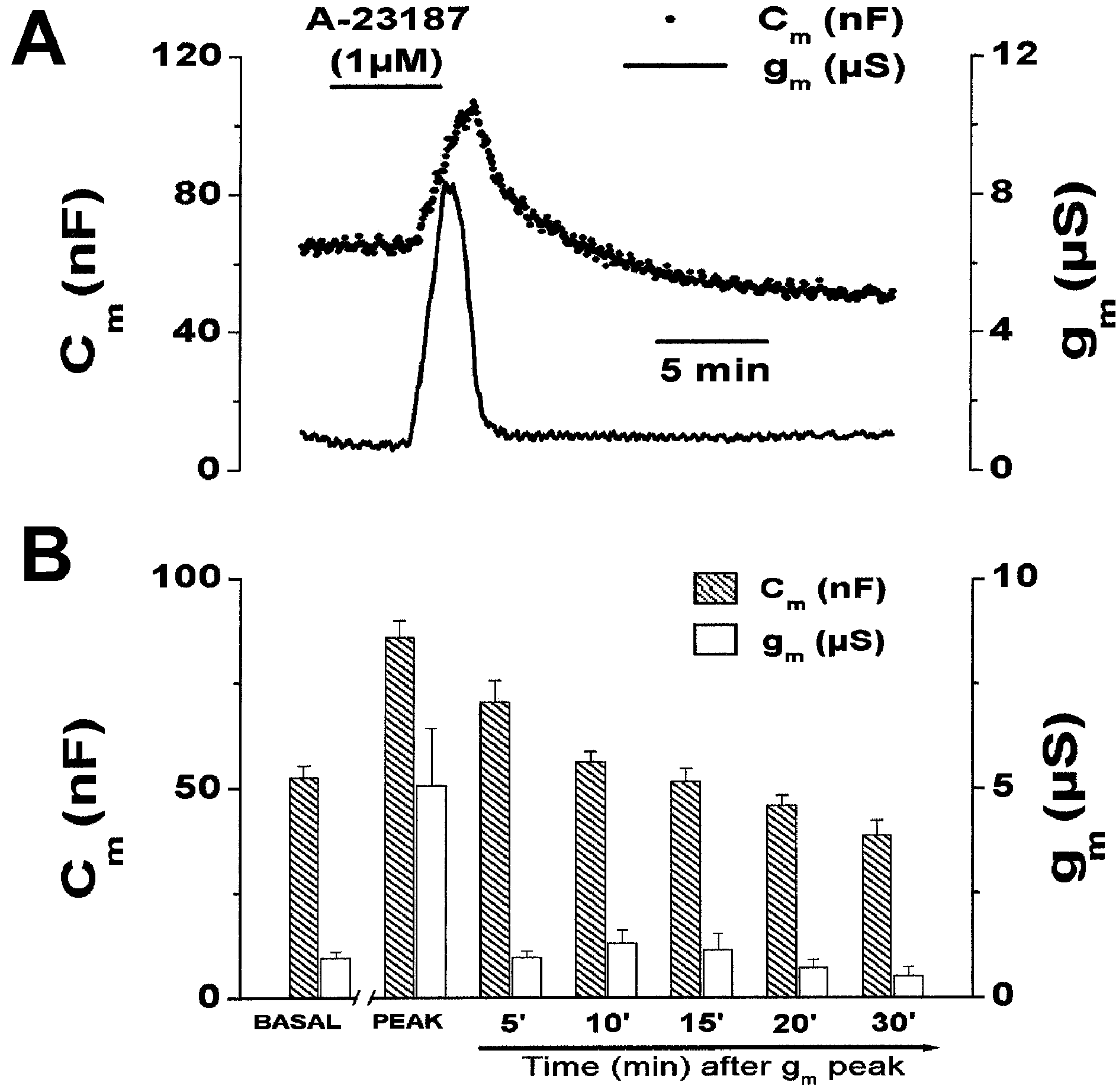The activation potential (AP), like the fertilization potential, is a single active response that can be evoked in mature oocytes by increasing the intracellular Ca2+ concentration ([Ca2+]i). The initial rise in [Ca2+]i, by Ca2+ entry, is further enhanced by a positive-feedback mechanism of Ca2+ release from internal stores. This results in a wave of high [Ca2+]i travelling across the cell, which generates: (i) a large Ca2+-dependent Cl– current (ICl(Ca)), responsible for the AP, (ii) the exit from meiotic arrest, and (iii) the massive exocitosis of cortical granules (Evans & Florman, 2002). The aim of this work was to determine, simultaneously, the changes in membrane conductance (gm) and capacitance (Cm) that follow egg activation, since fusion of a large number of cortical granules to the egg membrane and the subsequent membrane retrieval might affect the electrophysiological properties of the cell.
Eggs were obtained by incubating oocytes, isolated from a small piece of ovary, with progesterone (10 µM) for 12 h. Variations in gm and Cm were simultaneously monitored, under voltage clamp conditions, by continuously applying, at 0.33 Hz, a brief (300 ms) ramp-pulse protocol, similar to that recently described by Schmitt & Koepsell (2002).
Superfusing the egg with the Ca2+ ionophore A-23187 (1 µM) elicited changes in gm and Cm (see Fig. 1). gm increased earlier and had a faster time course than Cm (Fig. 1A). So, the time to peak was 1.42 ± 0.23 min (mean ± S.E.M., n = 11) for gm, versus 2.24 ± 0.39 min (same cells) for Cm. The duration of the peak (measured as the time required to return to basal values) was also shorter for gm (4.09 ± 0.56 min, n = 11) than Cm (10.30 ± 1.25 min, same cells). At the peak, gm values increased about 5.3-fold over the basal ones while Cm increased 1.6-fold (Fig. 1B). Such an increase in Cm would be expected if 1.06 X 106 cortical granules of 1 µm in diameter were fused to the cell membrane by this time. Interestingly, both Cm and gm values were smaller than basal ones over 20 min after gm peak. This suggests that membrane retrieval after fusion of cortical granules is not a selective process, limited to endocytosis of the added membrane. This non-selective retrieval of cell membrane may contribute to the loss of ion channels and other molecules from the egg membrane after fertilization.
This work was supported by grant BFI2001-0756 from MCYT.

